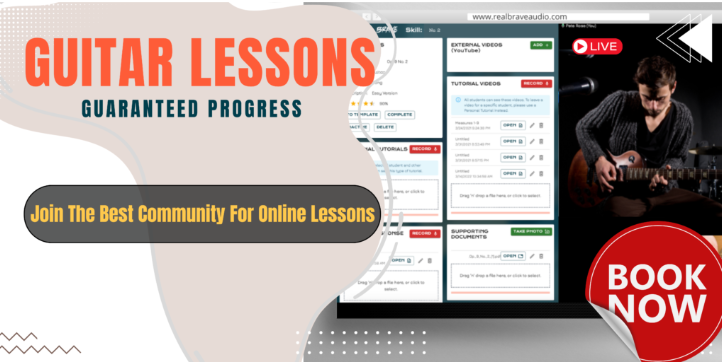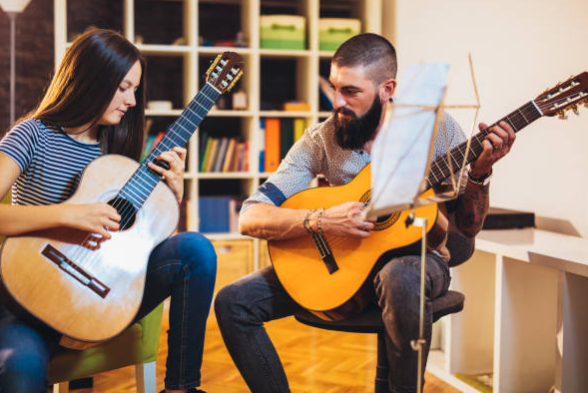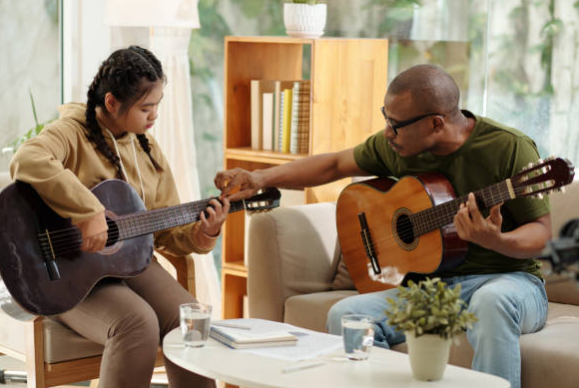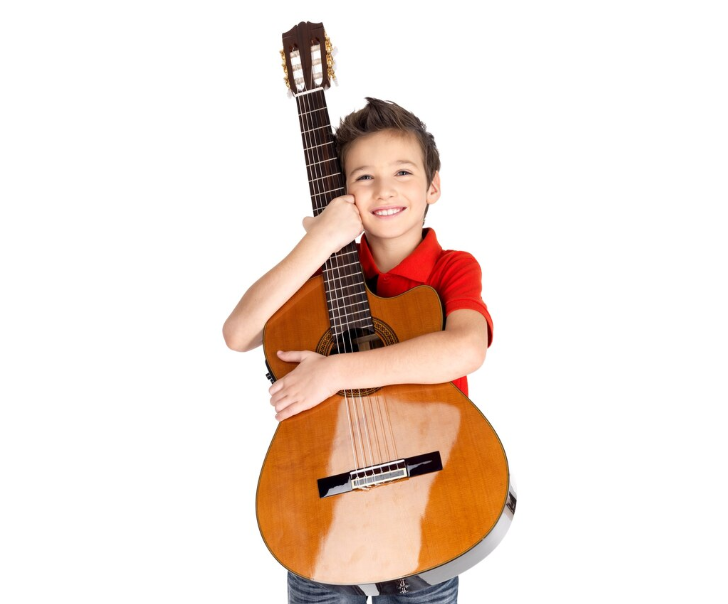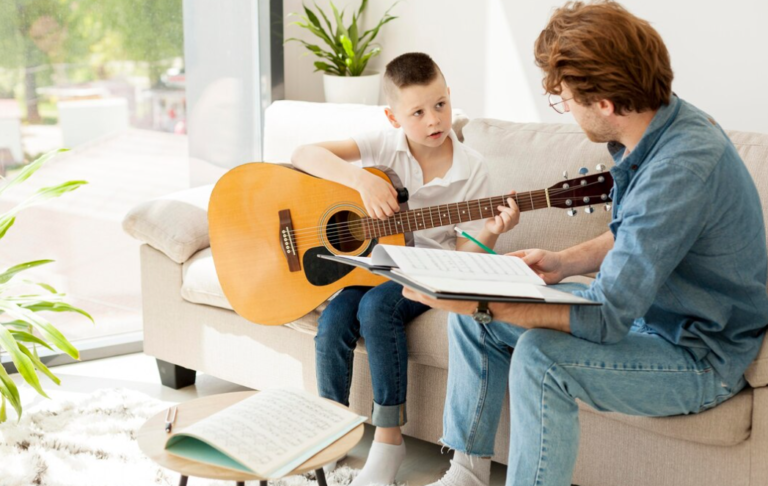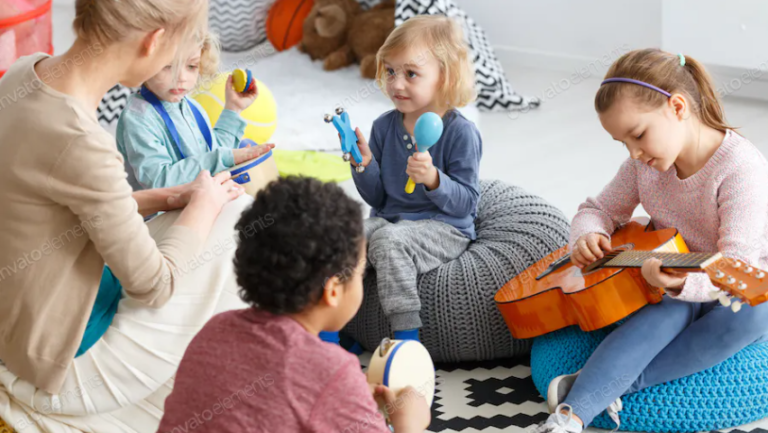The Importance of Warm-Ups for Guitar Players: Exercises for Beginners
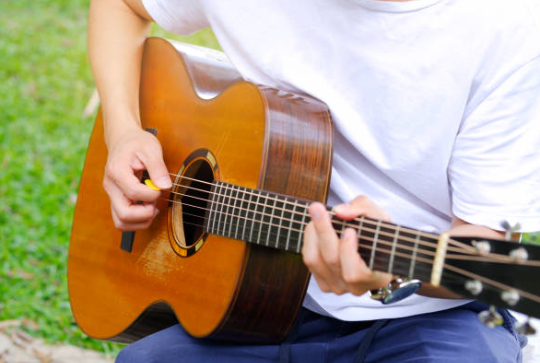
When picking up a guitar, it’s tempting to dive right into playing your favorite songs or nailing down those tricky riffs. But just like any physical activity, warming up is essential for guitarists. Think about it: athletes don’t start a game without stretching, and the same principle applies to musicians. Warming up not only prevents strain and injury but also enhances your control and dexterity, making your practice sessions smoother and more effective.
In this blog, we’ll explore why warm-ups are so vital for guitar players and look at a few simple exercises beginners can incorporate into their routines. Let’s get those fingers ready for action!
Why Warm Up Matters
- Prevents Injury: Playing guitar requires repetitive motions that put stress on your fingers, hands, and forearms. Over time, these movements can lead to injuries like tendinitis or carpal tunnel syndrome, especially if you’re not taking care to prepare your muscles and joints.
- Improves Flexibility and Dexterity: Warm-ups stretch and activate the muscles you’ll use while playing, increasing your flexibility and helping your fingers move more fluidly across the fretboard. This can make intricate chords and scales easier to tackle.
- Enhances Endurance: Just like runners build stamina, musicians need endurance to keep their hands nimble during longer sessions. Warm-ups prepare your muscles for extended playing, preventing that dreaded fatigue that can cut practice short.
- Boosts Precision: Practicing warm-ups consistently improves your hand-eye coordination, making it easier to hit the right notes with precision. This can be especially helpful for beginners who are still developing muscle memory for basic chords and scales.
Warm-Up Exercises for Beginners
Now that we understand the importance of warming up, let’s look at some practical exercises you can try. These are designed to gently activate the muscles in your fingers, hands, and wrists.
1. Finger Stretches
Start by stretching your fingers. Here’s how to do it:
- Extend your arm out in front of you with your palm facing up.
- Use your opposite hand to gently pull each finger back, one at a time, until you feel a light stretch. Hold for about 10 seconds per finger.
- Repeat with your other hand.
These stretches loosen up your tendons and help prevent cramps. Plus, they’re easy to do anywhere!
2. Spider Walk Exercise
This classic warm-up exercise is perfect for building finger independence and dexterity.
- Place your fingers on the 5th fret of the low E string (6th string), starting with your index finger.
- Place each finger on a separate fret: index on 5th, middle on 6th, ring on 7th, and pinky on 8th.
- Play each note in sequence, moving from the 6th string to the 1st string.
- Move up one fret and repeat.
This “spider walk” helps to coordinate your fingers and stretches them in ways that will improve their flexibility on the fretboard.
3. Finger Roll Exercise
This exercise enhances finger strength and control, preparing your hand for chords and scales.
- Place your index finger on the 5th fret of the low E string.
- Roll your finger gently to press down the same fret on the A string, then move to the D string, and so on.
- Repeat this rolling motion with your other fingers (middle, ring, and pinky) across the frets.
This exercise may feel awkward initially, but with time, it will improve your finger control.
4. Chromatic Scale Warm-Up
This is a great exercise to work on finger agility and accuracy.
- Start on the 1st fret of the low E string.
- Place your fingers one by one on the next three frets (index on 1st fret, middle on 2nd, ring on 3rd, pinky on 4th).
- Play each note in order, moving from the 6th string down to the 1st string.
- Once you reach the bottom string, slide up one fret and repeat the exercise in reverse, working back up to the 6th string.
This exercise helps with finger independence and getting used to the spacing on the fretboard.
5. Wrist Circles
After focusing on your fingers, it’s a good idea to warm up your wrists too, as they bear a lot of strain during playing.
- Hold your hands out in front of you with your wrists relaxed.
- Rotate your wrists in small, gentle circles—first clockwise, then counterclockwise.
- Do this for about 30 seconds each way.
Wrist circles help release tension and increase flexibility, ensuring that your wrists can keep up with the demands of your playing.
Tips for Effective Warm-Ups
- Take it Slow: Don’t rush through these exercises. Focus on accuracy and smoothness before speed.
- Stay Relaxed: Tension in your hands or shoulders can lead to strain. Stay mindful of your posture and relax your shoulders.
- Consistency is Key: Try to warm up every time you play, even if it’s only for a few minutes. Regular practice builds muscle memory and makes playing feel more natural.
- Listen to Your Body: If any of these exercises cause discomfort or pain, stop and try a gentler variation. Warm-ups should prepare you, not strain you.
Final Thoughts
Incorporating a warm-up routine into your practice might seem like an extra step, but it’s an investment in your long-term playing ability. These exercises help you build the foundation for precision, control, and endurance, allowing you to play more effectively and safely. Start slow, be consistent, and enjoy the benefits as you progress on your guitar journey.
Warm up those fingers, and happy playing!
Interested in taking your guitar skills to the next level? Click the below and book a free lesson with us! We’re committed to helping you express yourself freely on the guitar without endless scales and theory.
Author: Daniel Powers Jr, the founder of Real Brave™, serves as the chief inspiration to thousands of students in the Real Brave music instruction program. He’s also the visionary behind PracticePad™, an online platform for live one-on-one online music lessons, lesson tracking, and scheduling. Beyond his entrepreneurial pursuits, Daniel leads a non-profit organization that provides formerly homeless children with access to music education, making a profound impact on their lives. His unwavering dedication to music, innovation, and education continues to inspire individuals to reach their fullest potential while creating positive change in communities. Follow Real Brave on all the socials:
youtube.com/@realbraveinc
twitter.com/realbraveinc
https://www.tiktok.com/@realbraveinc
instagram.com/realbraveaudio
facebook.com/realbraveinc
